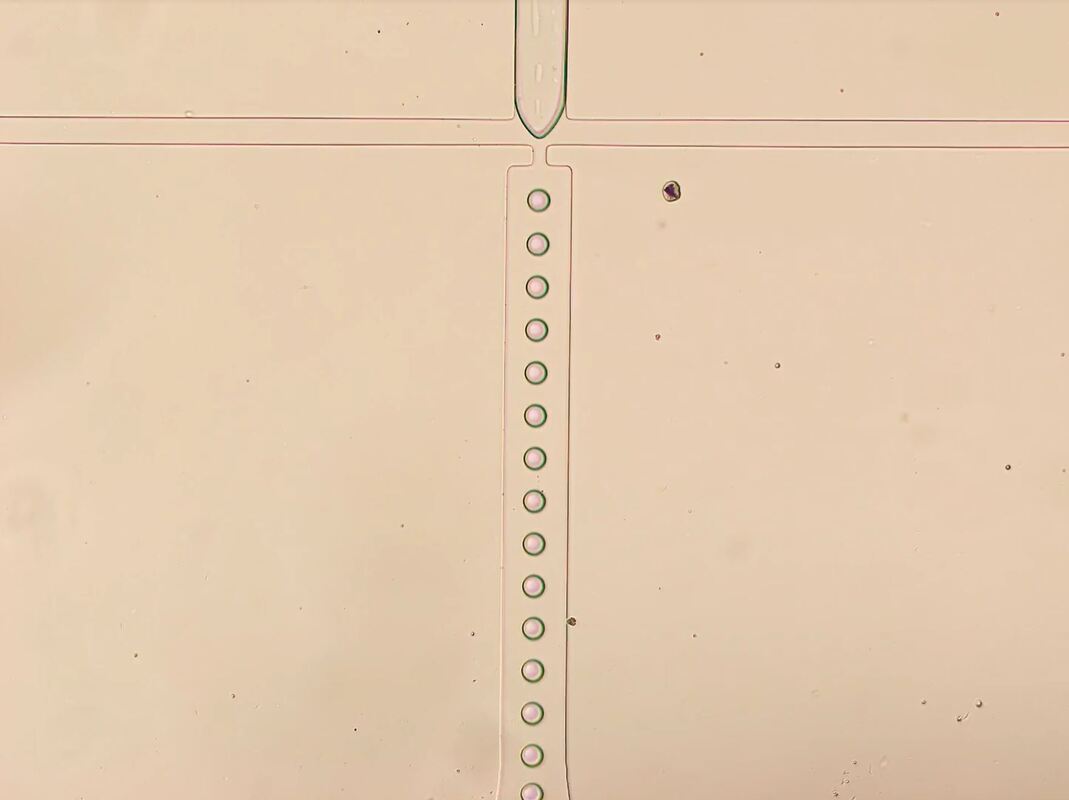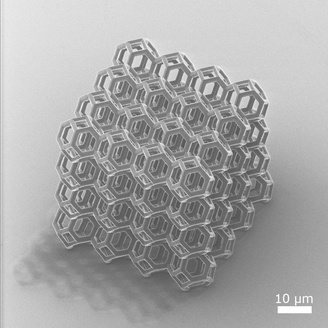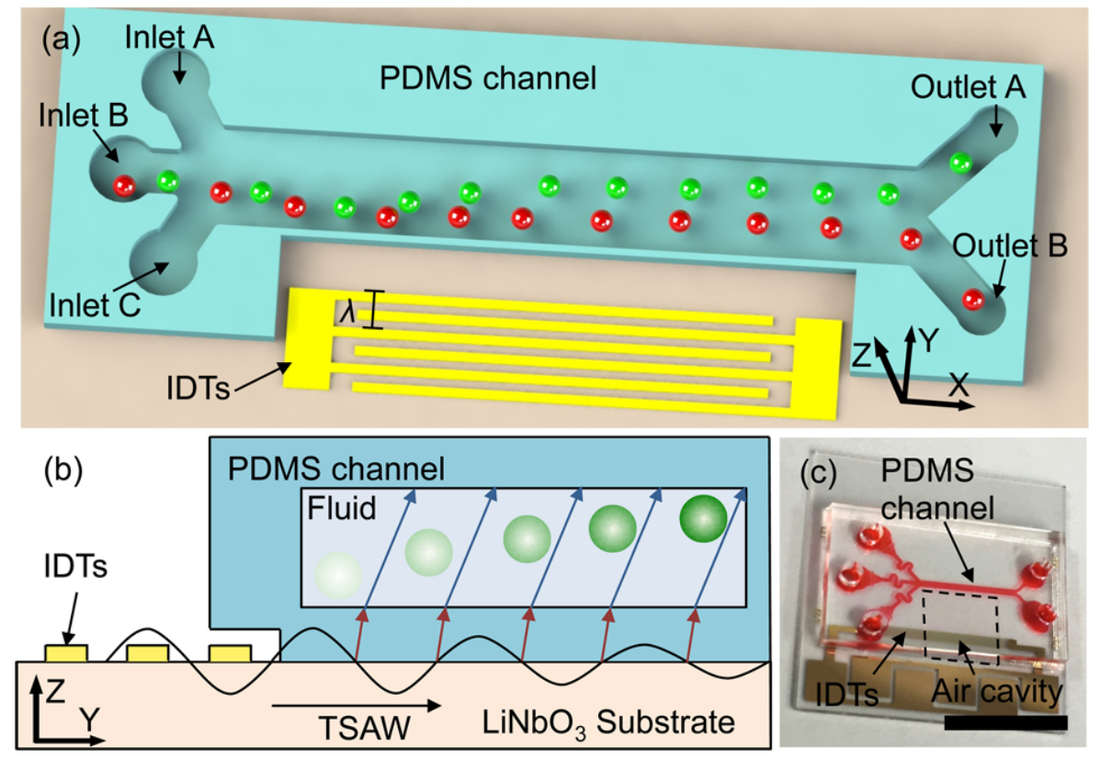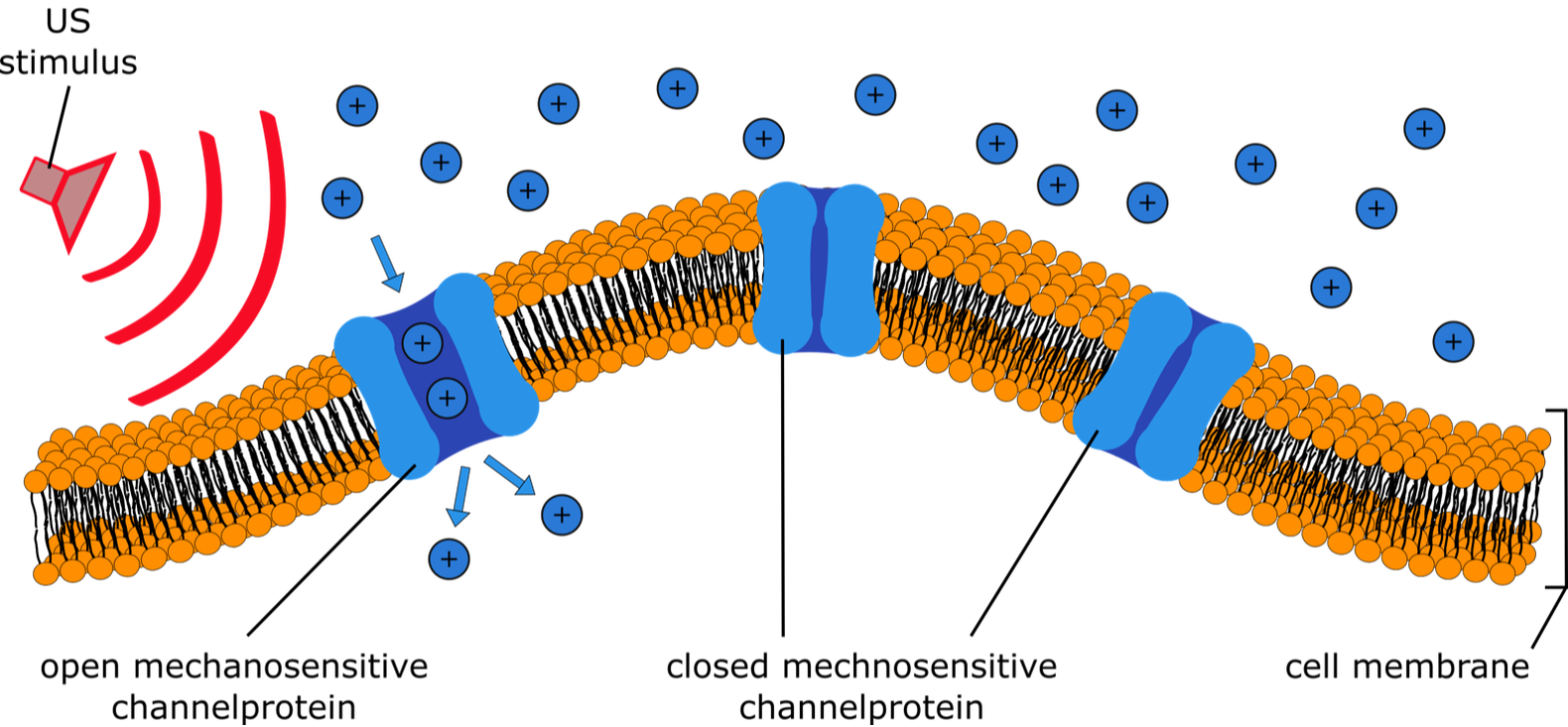Our research
MicrofluidicsHow fluid behaves on the microscale
Microfluidics is used to manipulate fluids on microscopic scales. This is useful as a platform to isolate and examine cells, study diseases and build model versions of the human body like a kidney on a chip! The devices are made using conventional clean-room based microfabrication processes.
|
Additive Manufacturing3D printers are taking over the world with their ability to build complex parts with incredible ease
Additive manufacturing is expanding in all directions! People are 3D printing houses, rocket engines, turbines, toys, even skin! We're looking at the microscale where we use novel techniques to 3D print tiny structures for our experiments!
|
AcousticsMoving cells and particles with sound!
Our lab specializes in manipulating particles and cells using ultrasound. We have a lot of expertise in modelling and experimenting with acoustic waves in microscale systems. We can use acoustic waves to pattern and sort cells depending on their stiffness and density.
|
MechanogeneticsEnabling cells to sense sound, pressure and flow!
We are interested in exploring how cells can sense mechanical stimuli and how this knowledge can be used to manipulate cells and brain areas. In our lab we develop ultrasound and fluidic devices to deliver mechanical stimuli to cells and use genetically modified cells to investigate mechanosensitive proteins.
|
News from the group:
Our research values
We believe that the best work in our fields comes from the harmony of
Great ExperimentsAsking the right questions in the laboratory and being prepared create the environment needed to succeed
|
Targeted SimulationsSimulations are a powerful tool, knowing how and when to best use them gives the most effective results
|
Analytical understandingAnalysis and approximation give us insight into the underlying causes of the phenomena we observe
|




